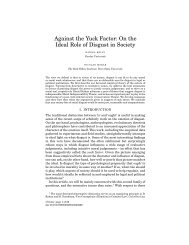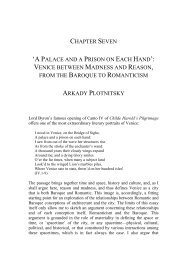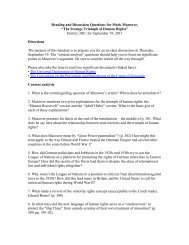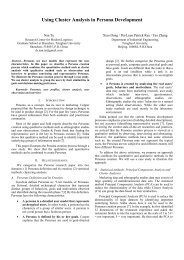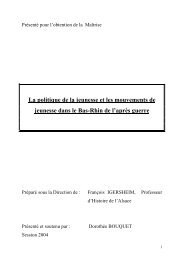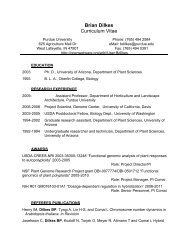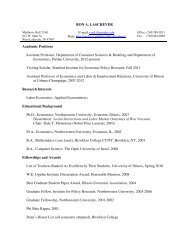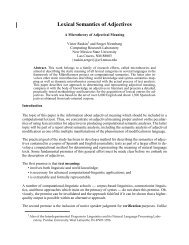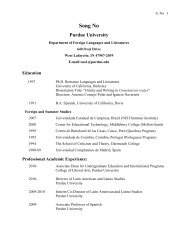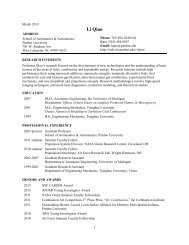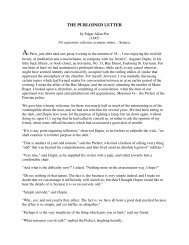Parsons 1942 - Career Account Web Pages
Parsons 1942 - Career Account Web Pages
Parsons 1942 - Career Account Web Pages
Create successful ePaper yourself
Turn your PDF publications into a flip-book with our unique Google optimized e-Paper software.
6i6<br />
AMERICAN SOCIOLOGICAL REVIEW<br />
and occupational status the parental couple is left without attachment to<br />
any continuous kinship group. It is, of course, common for other relatives<br />
to share a household with the conjugal family but this scarcely ever occurs<br />
without some important elements of strain. For independence is certainly<br />
the preferred pattern for an elderly couple, particularly from the point of<br />
view of the children.<br />
The second basis of the situation lies in the occupational structure. In<br />
such fields as farming and the maintenance of small independent enterprises<br />
there is frequently no such thing as abrupt "retirement," rather a<br />
gradual relinquishment of the main responsibilities and functions with advancing<br />
age. So far, however, as an individual's occupational status centers<br />
in a specific "job," he either holds the job or does not, and the tendency is to<br />
maintain the full level of functions up to a given point and then abruptly to<br />
retire. In view of the very great significance of occupational status and its<br />
psychological correlates, retirement leaves the older man in a peculiarly<br />
functionless situation, cut off from participation in the most important interests<br />
and activities of the society. There is a further important aspect of<br />
this situation. Not only status in the community but actual place of residence<br />
is to a very high degree a function of the specific job held. Retirement<br />
not only cuts the ties to the job itself but also greatly loosens those to the<br />
community of residence. Perhaps in no other society is there observable a<br />
phenomenon corresponding to the accumulation of retired elderly people in<br />
such areas as Florida and Southern California in the winter. It may be surmised<br />
that this structural isolation from kinship, occupational, and community<br />
ties is the fundamental basis of the recent political agitation for help<br />
to the old. It is suggested that it is far less the financial hardship9 of the<br />
position of elderly people than their social isolation which makes old age a<br />
"problem." As in other connections we are here very prone to rationalize<br />
generalized insecurity in financial and economic terms. The problem is obviously<br />
of particularly great significance in view of the changing age distribution<br />
of the population with the prospect of a far greater proportion in<br />
the older age groups than in previous generations. It may also be suggested,<br />
that through well-known psychosomatic mechanisms, the increased incidence<br />
of the disabilities of older people, such as heart disease, cancer, etc.<br />
may be at least in part attributed to this structural situation.<br />
9 That the financial difficulties of older people are in a very large proportion of cases real<br />
is not to be doubted. This, however, is at least to a very large extent a consequence rather than<br />
a determinant of the structural situation. Except where it is fully take care of by pension<br />
schemes, the income of older people is apt to be seriously reduced, but, even more important,<br />
the younger conjugal family usually does not feel an obligation to contribute to the support of<br />
aged parents. Where as a matter of course both generations shared a common household, this<br />
problem did not exist.<br />
This content downloaded from 128.210.126.199 on Wed, 13 Nov 2013 17:34:48 PM<br />
All use subject to JSTOR Terms and Conditions



